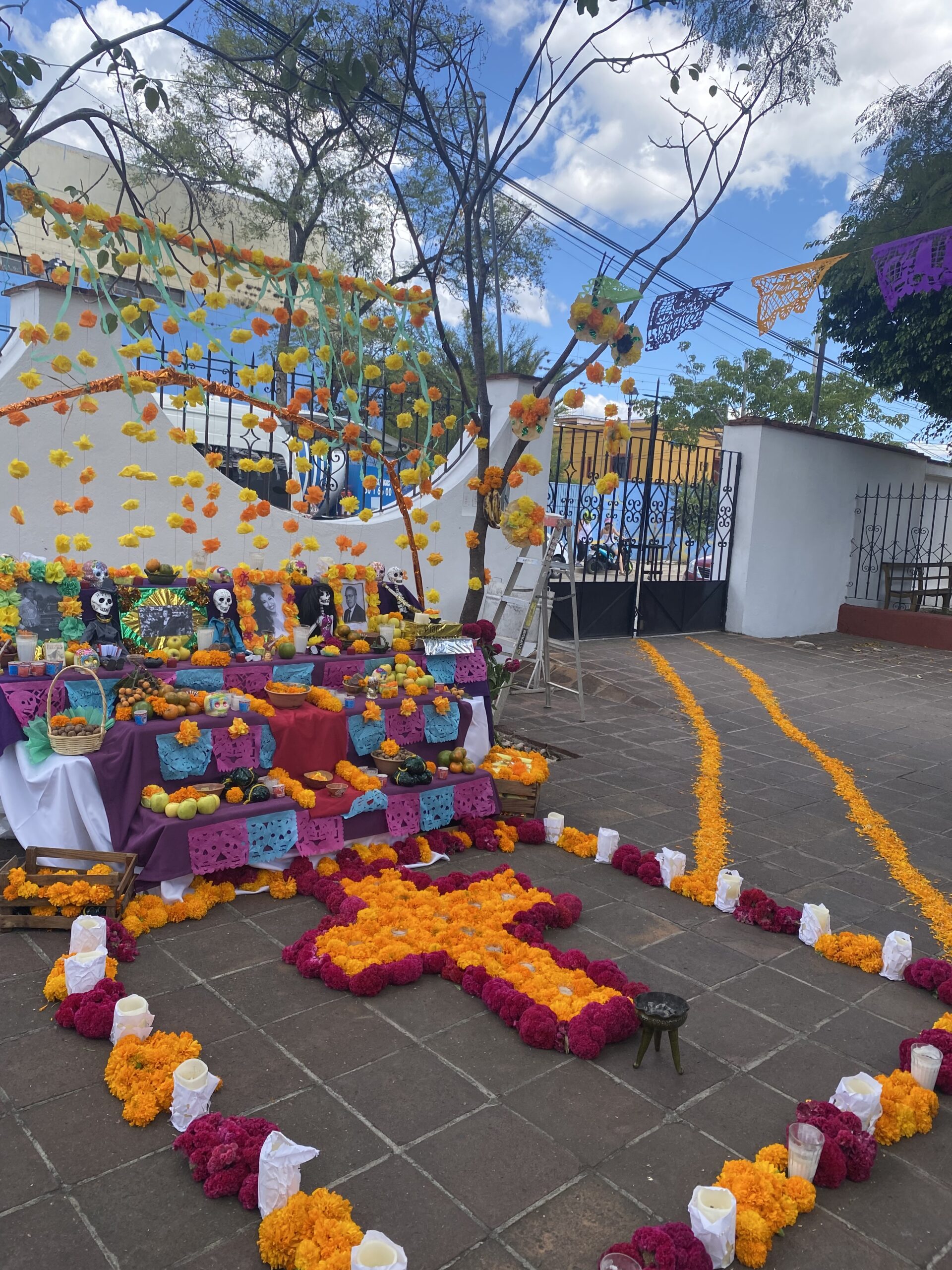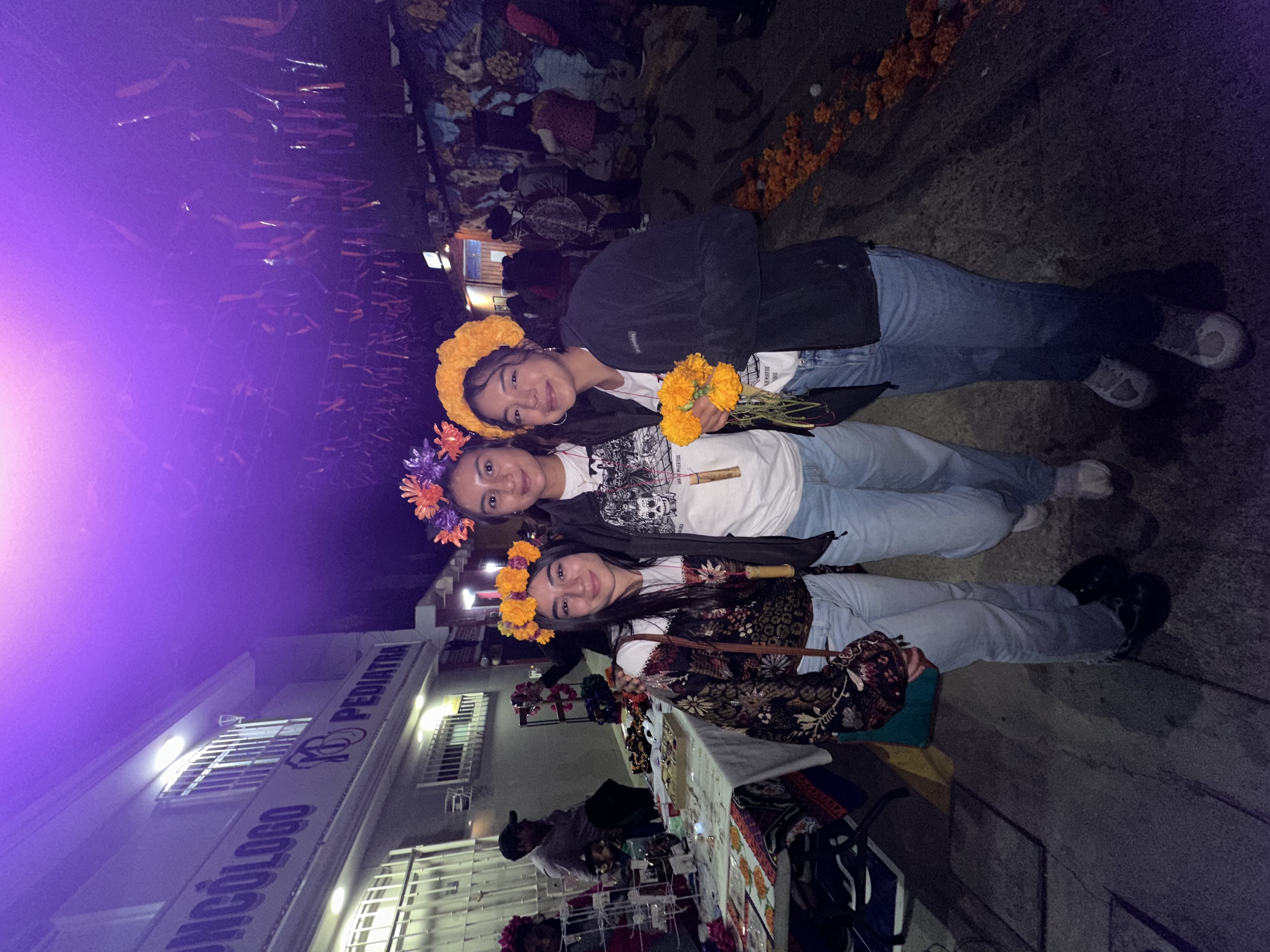
Polvo Eres y A Ser Polvo Tornoras
Nov. 3, 2023
For the past few days, my cohort and I have been working together to build an altar for Dia de los Muertos or Day of the Dead. This is a holiday where families remember the loved ones they have lost and await for their spirits to return home and visit the living family members. It’s tradition for altars to be built with pictures of those who have passed as well as offerings like their favorite foods and drinks or items that represent them. At night, families visit the panteones (cemeteries) to lay cempasuchil flowers, light candles, and share a meal with their deceased family members.
This year, our group was given the opportunity to build an altar honoring the lives of Mexican singers who have passed, in the town of Xochimilco. We were divided into groups and assigned a different singer to represent on the altar. Our group chose Juan Gabriel, a famous singer known for his flashy outfits and emotive songs. Together we created paper cempasuchil flowers, sewed a shiny teal outfit to put on our paper mache skeleton to represent Juan Gabriel, and decorated a frame with metallic paper and flowers to hold his portrait. At times, the work felt stressful, especially when we couldn’t figure out the best way to build a miniature suit from a piece of cloth, but we played his music to keep our spirits high and made several attempts at a suit design until we got everything completed. Throughout the experience, there were times I felt defeated, like the vision we had for our part of the altar wasn’t coming to life but by keeping a positive attitude and communicating with my group I pushed through those feelings and we worked together to create something we felt proud of.
After setting up the altar in Xochimilco, we were taken to the cemeteries of Xoxocotlan to see how families typically celebrate the night of Dia de los Muertos, and we were given candles and fresh cempasuchil flowers to offer families as we walked through the panteon. As I walked past the various gravestones, laying down flowers or leaving a candle, I was overcome with grief. I have lost several family members in recent years and although I thought of them often, I had never felt more connected to them than on that day. As I looked around with tears in my eyes, I noticed that other students were feeling the same. We shared a beautiful moment that night, comforting each other, reminding one another that our loved ones never really leave us and are always watching over us, but also allowing ourselves to grieve and cry and miss them.
In U.S. culture, there is no annual celebration or holiday where people gather to remember and honor the loved ones they lost but I’m grateful that Dia de los Muertos is a holiday my family has always observed. Although death can be scary and sad or overwhelming, it reminds us to appreciate the time we have and I also like the thought of the spirits of the deceased looking after us and visiting us every year. The entrance to the panteon was painted with the phrase “Polvo Eres y A Ser Polvo Tornaras” / “You are Dust and You Will Return to Dust.” To me, this was an important reminder to appreciate life, live to the fullest, and to stay humble because after all, we all return to dust.

